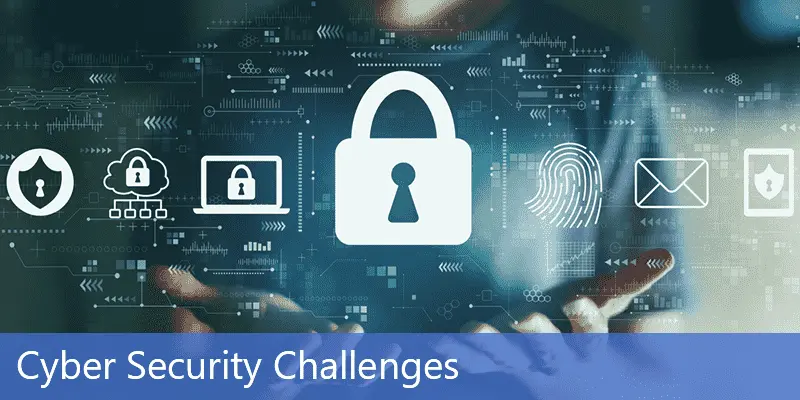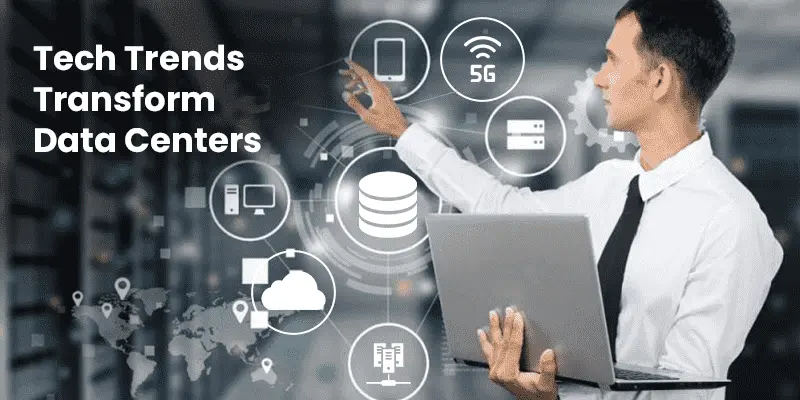
Top 10 Technology Trends Transforming Data Centers in 2026
The pandemic has changed the global business landscape. The data demands among modern businesses are increasing daily, leading to a corresponding rise in data center needs worldwide. Keeping an eye on the innovations and trends in data center technology is crucial to stay ahead. This article explores the top 10 technology trends that will shape data center design, management, and functionality in 2026 and beyond.
The COVID-19 pandemic has further accelerated the growth of the worldwide data center market. According to a report, the market is expected to grow at a Compound Annual Growth Rate (CAGR) of 4.5% during the 2021 – 2026 period. It is poised to attain a global value of $251 billion by 2026.
Top 10 Tech Trends Shaping Data Centers in 2026
The data demands amongst modern businesses are increasing day by day. These demands are getting translated to the increased data center demands across the world. Amidst this, we must keep an eye on the innovations happening in and around data centers. The following are the top 10 technology trends that will dictate data center design, management, and functionality in 2024 and beyond:
1. Artificial Intelligence (AI)
No other technology impacts the efficiency of a data center as much as Artificial Intelligence (AI) does. Sophisticated AI programs optimize the performance of a data center. Through predictive analytics, AI identifies areas of concern and connects them with different processes and energy usage.
Google was able to cut down 40% of its data center’s cooling costs just by controlling the cooling infrastructure through AI programs. AI gives facility managers a clear picture of the health of all the data center components. That way, they are able to repair or replace components that need attention.
2. 5G Network
Fifth-generation of the mobile communication network, popularly called 5G, is finally a reality now. The dawn of 5G will facilitate faster data speeds and prompt access which will further strengthen the case for edge computing.
While the network components, software, and hardware will have to be upgraded to make the data centers compatible with the 5G network, the benefits it promises will more than make up for the associated costs.
3. Automation
The unprecedented times like the COVID-19 pandemic have accelerated the adoption of automated processes and remote management. Troubleshooting of the inefficiencies of the network as well as the infrastructure is already automated.
With companies aiming to achieve higher productivity and efficiency while involving minimal human resources, data center automation will play a vital role in the future. Moreover, automation gives workers more time to focus on other critical tasks.
4. Intelligent Monitoring
Intelligent monitoring is another trend you will only see growing in the future. Companies have started to use intelligent, automated, and live monitoring methods that help them access their data using a simple mobile application. The real-time information helps you predict your requirements and problematic areas effectively.
5. Server Virtualization
With an aim to bring down infrastructure burdens, many managed service providers (MSPs), as well as data centers, are migrating to Software-Defined Data Centers (SDDCs). In an SDDC model, virtualization technologies recreate the computing powers and storage in software form.
You may also like: Software Defined Data Center and It’s Advantages
Server virtualization permits data centers and service providers to house multiple users on a single server by segmenting servers, contrary to the traditional, inefficient way of issuing one server to each user. The virtualization also facilitates scalability as the workloads are distributed across multiple servers.
This model effectively works as a cloud model where the service provider can parcel out data storage and processing power on an ‘as required’ basis. Virtualization also optimizes efficiency by making sure that the resources are being utilized to their fullest.
6. Edge Computing
Centralized data processing becomes inefficient and economically unviable as the number of connected devices increases. Edge computing is a data center architecture that utilizes the processing power of devices on the network edge for resolving actions and requests.
Edge data centers bring down latency and improve the overall performance of all the connected IoT (Internet of Things) devices. The users also experience less service interruption.
Edge computing is one of the most prominent technological developments for data centers. While 2024 may not be the ‘big bang’ year for technology, it will undoubtedly be a year of a more significant strategic foothold. Big players like American Tower and AWS (Amazon Web Services) are moving towards the deployment phase and have the required resources to impact edge computing and the way it evolves.
7. Hybrid Cloud
To get the best of both the public and the private cloud, more and more companies are moving towards hybrid cloud deployments. The private cloud offers excellent control and security, while the public offers expansive computing powers. With a hybrid cloud architecture, service providers can keep and manage critical data and resources on secure private servers and move them to a public server for different processing requirements.
You may also like: A walk Through Hybrid Cloud Infrastructure
Data analytics is becoming an integral part of businesses. Amidst this, an architecture that provides easy and secure access to cloud-based services is paramount to a successful business.
8. Hyperscale Data Centers
With increasing volumes of data to handle, data centers are becoming exponentially scalable. Such data centers that can scale up quickly to meet the increasing demands are called hyper-scale data centers. In hyper-scale data centers, companies can replace single components as against the conventional method where the entire server has to be replaced. This not only cuts down the costs but also reduces the downtime.
Moreover, companies can add components modularly to quickly scale up operations in hyperscale data centers. It provides great flexibility to the users. Hence, hyperscale data centers are set to have a dramatic impact on all facets of the data centers in the coming years.
You may also see: How 5G will Impact the Tech World and Cloud Computing
9. Chip-level Security
The widespread availability of the internet has also resulted in increased security concerns like cyberattacks. These growing concerns have led companies to look for innovative solutions to safeguard data centers. Global tech giants like Google are attempting to bring chip-level security.
A concerted project named OpenTitan aims to develop trustworthy chip designs for data centers. According to Google, chip-level security will ensure that both the hardware and software are in their intended, incorruptible shape. The system will ensure that essential components boot safely with verifiable, authorized codes.
Hence, the chip-level security will ensure that the server boots with accurate firmware and is protected against low-level malware. This makes it one of the top data center trends to keep an eye on.
10. Green Data Center
A data center with maximum energy efficiency and minimal environmental influence is called a green data center. Data center investors and stakeholders are equally committed to bringing sustainable solutions that align with climate resilience. They are all becoming an essential part of the green energy revolution.
This sets a new trend where we can expect more and more data centers to begin investing in renewable resources and methods that reduce emissions and power consumption.
You may also read: Virtual Data Center’s Advantages and Its Impact on a Cloud Networking
Some of the New Data Center Trends in 2026
As we move forward in time, we can see that numerous technological subfields have already seen significant improvement in recent years. The following are some of the most recent and fascinating developments in the region of data center:
1. Hyper-Scalability of Data Centers or ultra-scalability
On-demand IT resources and distributed systems has a large number of fast-working servers that can extend horizontally and vertically, improving data storage and transfer.
2. Small Data Centers
Small data computing is linked to edge computing and is tied to applications that demand minimal latency. A small data infrastructure makes it easier to conduct a speedy examination of most data.
3. Data Centers Promoting Sustainability
Almost all big players in the market have opted to “Go Green” and significantly reduce their carbon footprints. Businesses and data center providers consider energy efficiency, water use, and trash output. Microsoft is attempting to power its data center operations using 100% renewable energy.
4. Remote Management of Data Centers
Data Centers operate 24×7 and 365 days a year. One of the significant advancements scheduled for 2024 is remote management of data centers giving customers more control over operating parameters and insights.
5. Data Center Automation
2024 will see more data center automation and AI. AI and automation in data centers have become a reality. Data centers are growing faster than human workers can manage with increased data consumption.
Conclusion
Data centers are of critical importance to the present business scene. While their demands were always on an upward trajectory, the situation created by the COVID-19 pandemic has pushed it further up.
Similar to every other segment in and around IT, data center technologies are changing rapidly to achieve a highly optimized and effective system. It is therefore very crucial for you as a business owner to remain updated on each of these technological changes and trends. After all, they are going to shape the future of data centers.
FAQs
What new technology is coming in 2024-26?
2024-26 is poised to be a year of exciting technological advancements. We can expect to see artificial intelligence become even more integrated into our daily lives, with applications in areas like healthcare and transportation. 5G networks will likely see wider adoption, boosting internet speeds and enabling new possibilities for connected devices. The development of quantum computing is also expected to continue, potentially revolutionizing fields like drug discovery and materials science. Additionally, there will likely be a continued focus on green technology
What are technology trends?
Technological developments have a significant effect on businesses and their progression. Trends in technology might help users identify potential customers or new products, but they may also provide you with new ways to compete in the market.
What technology trends should marketers monitor?
In light of the constant advancements in the various spheres of technology, many of the current trends revolve around it. Brand-consumer interactions are becoming increasingly digital and automated, and it’s nearly impossible to ignore the winds of technical innovation.
What is the future of the data center?
The future of data centers is shaped by trends like increased use of server virtualization, edge computing, hybrid cloud solutions, AI, automation, and sustainability. These advancements will enhance efficiency, scalability, and security while reducing latency and environmental impact. Data centers will continue evolving to meet growing data demands and support the digital economy.
What is the trend in data centers in 2030?
By 2030, data centers are expected to be more energy-efficient, utilizing advanced AI and automation for management. Trends will include the widespread adoption of edge computing, increased use of renewable energy, and advanced cooling technologies. Additionally, there will be a focus on modular and hyperscale designs to accommodate growing data needs and improved cyber security measures.
What is the growth forecast for data centers?
The growth forecast for data centers is strong, driven by increasing data consumption, cloud computing demand, and advancements in technologies like AI and IoT. The global data center market is expected to expand significantly, with more investments in hyperscale and edge data centers, aiming to improve efficiency and meet the rising data storage and processing needs.






